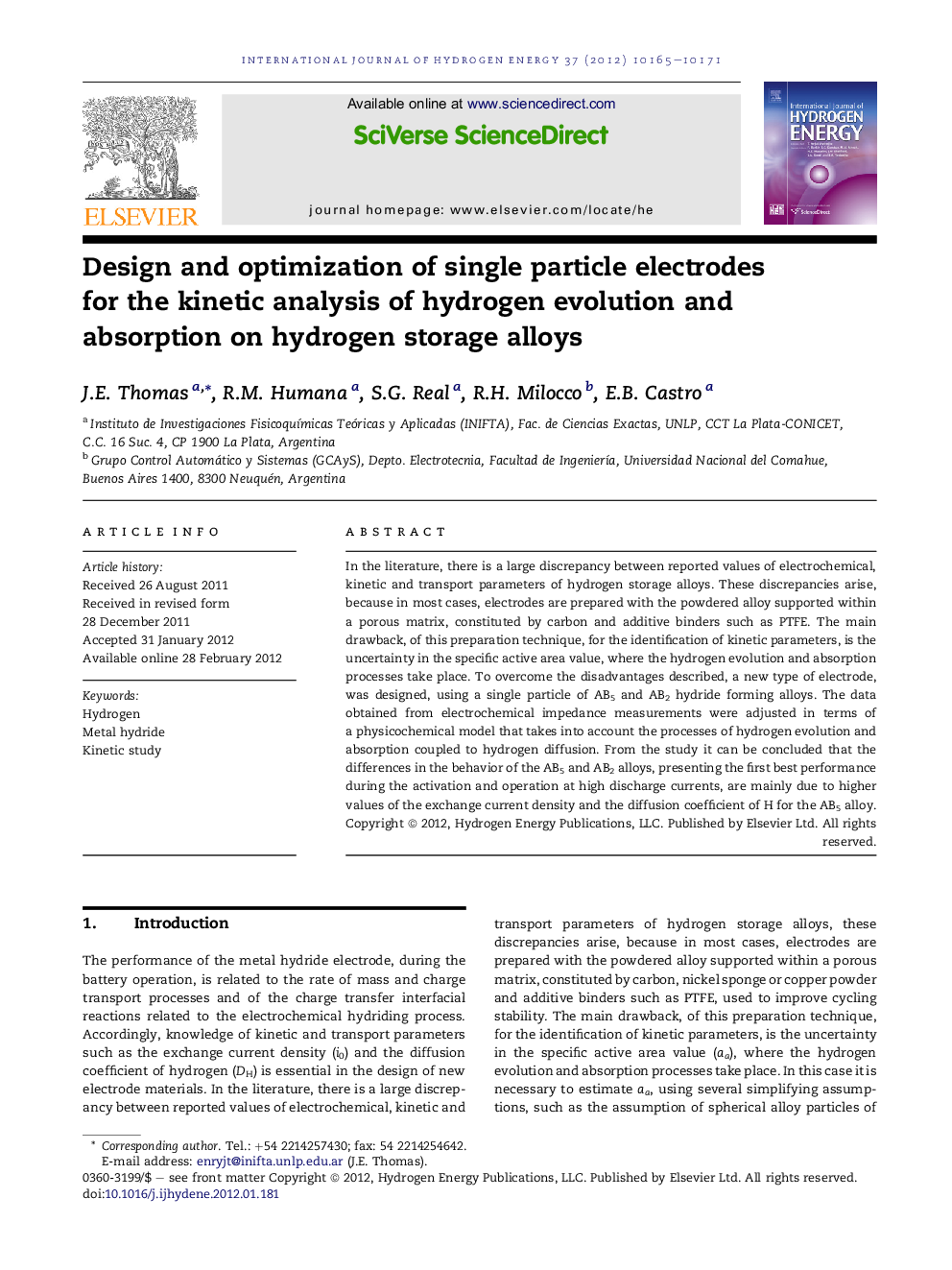| Article ID | Journal | Published Year | Pages | File Type |
|---|---|---|---|---|
| 1275203 | International Journal of Hydrogen Energy | 2012 | 7 Pages |
In the literature, there is a large discrepancy between reported values of electrochemical, kinetic and transport parameters of hydrogen storage alloys. These discrepancies arise, because in most cases, electrodes are prepared with the powdered alloy supported within a porous matrix, constituted by carbon and additive binders such as PTFE. The main drawback, of this preparation technique, for the identification of kinetic parameters, is the uncertainty in the specific active area value, where the hydrogen evolution and absorption processes take place. To overcome the disadvantages described, a new type of electrode, was designed, using a single particle of AB5 and AB2 hydride forming alloys. The data obtained from electrochemical impedance measurements were adjusted in terms of a physicochemical model that takes into account the processes of hydrogen evolution and absorption coupled to hydrogen diffusion. From the study it can be concluded that the differences in the behavior of the AB5 and AB2 alloys, presenting the first best performance during the activation and operation at high discharge currents, are mainly due to higher values of the exchange current density and the diffusion coefficient of H for the AB5 alloy.
